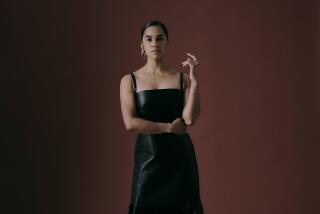Birgit Akesson; Noted Swedish Dancer and Choreographer
- Share via
Birgit Akesson, a leading Swedish choreographer with a lifelong interest in dance-ritual and dancing without music, died March 24 in Stockholm. She was 93.
Celebrated in her heyday by the French as “the Picasso of dance,” Akesson was born in Malmo, Sweden, in 1908. She began studying with modern dance pioneer Mary Wigman in Dresden in 1929 and joined Wigman’s company in 1931. Three years later, she made an acclaimed unaccompanied solo debut in Paris, after which she danced throughout Europe.
During World War II, Akesson taught dance in Stockholm and developed her own, deeply personal style of modernism--one based on training each part of the body to move independently. She returned to performing in 1946, touring Europe and North America. She appeared at Massachusetts’ Jacob’s Pillow Dance Festival in 1955.
Though she never studied classical ballet, Akesson achieved her greatest fame when choreographing for the Royal Swedish Ballet in collaboration with Swedish composers, painters and poets. Her best-known works include the mythological ballets “Sysyfos” (1957), “Minotauros,” (1958), “Rites” (1960), “Ikaros” (1963) and “Nausikaa” (1966), though she also created a number of abstract, multimedia pieces.
One daring sequence in her “Play for Eight” (1962) used only mobiles and light for the entire movement. She also choreographed for television in the 1960s, investigating the creative potential of that medium.
In 1963, Akesson became a member of the artistic council of the Royal Swedish Ballet, responsible for determining the policy of that company. The next year she co-founded the Stockholm Choreographic Institute (now the State Dance School), where she headed the choreography department until her retirement in 1968.
She later researched ritual dances in Africa and in 1983 published a book, “The Mask of Spring Water,” on the African origins of dance. In 1989, Swedish television presented two new unaccompanied Akesson solos that defined their rhythms through foot-stamping and explored the spectrum of organic body shapes that had always distinguished her creative style.
More to Read
The biggest entertainment stories
Get our big stories about Hollywood, film, television, music, arts, culture and more right in your inbox as soon as they publish.
You may occasionally receive promotional content from the Los Angeles Times.










